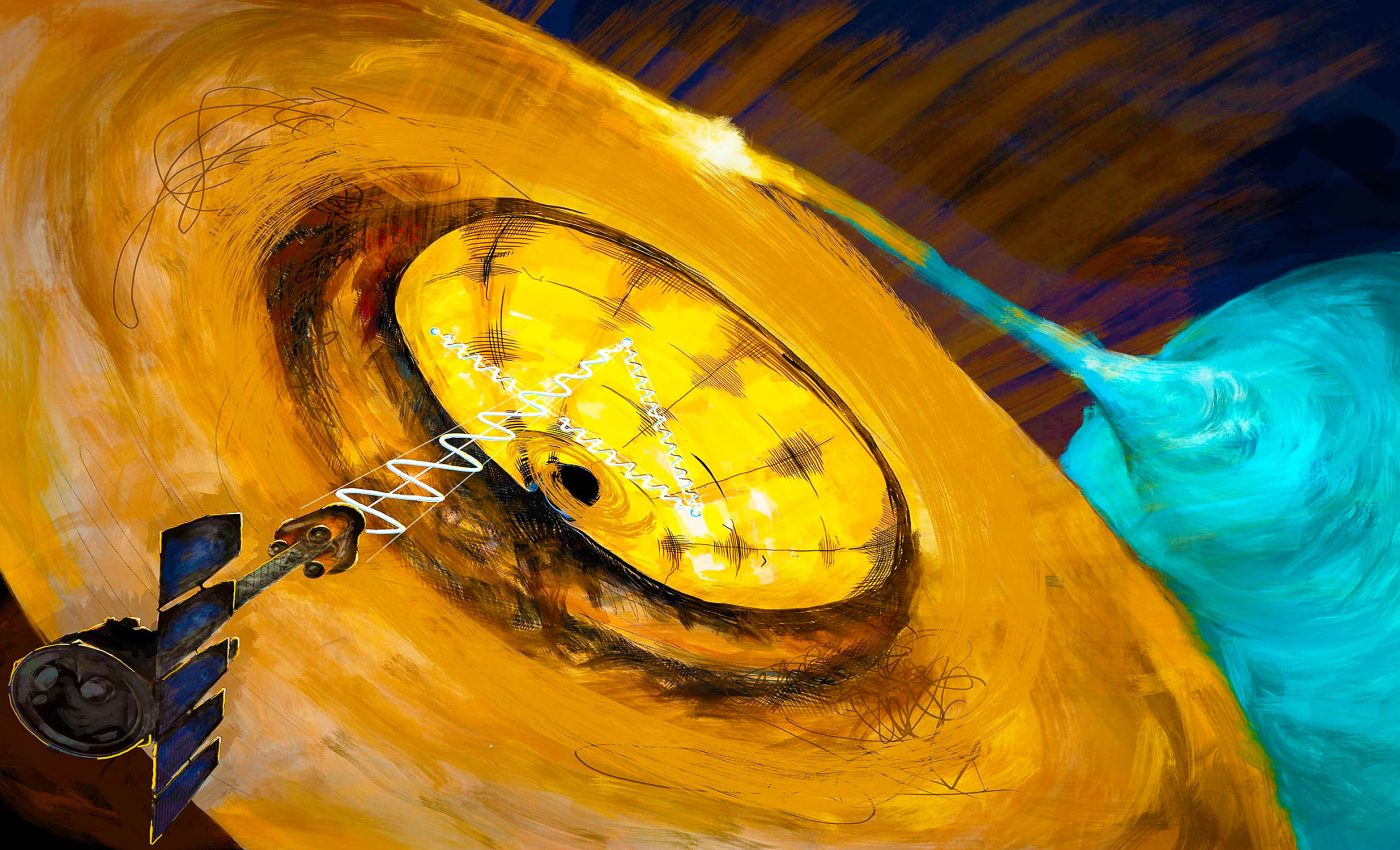
Truth behind the ultrabright X-ray source of Cygnus X-3 revealed
In a noteworthy revelation, astronomers have made a game-changing discovery in the quest to understand the enigmatic nature of the Cygnus X-3 binary system that has baffled scientists for years.
Recently published in the prestigious Nature Astronomy journal, it turns out that this well-known X-ray binary system is actually a hidden ultraluminous X-ray source.
What is an X-ray binary star system?
X-ray binaries are a stellar ballet between two cosmic dancers: a normal star and a compact object such as a neutron star or a black hole.
As these entities coalesce in mutual gravitational interaction, the compact object, with its immense gravity, begins to siphon material from its companion star.
This astronomical larceny results in the accretion of the donor star’s material onto the compact object.
The diabolical beauty of this process lies in the sheer efficiency of energy conversion. As the stolen material spirals inward, it heats up because of friction and gravitational compression, getting so hot that it emits X-rays.
These X-rays can be spotted by specialized telescopes and satellites, making X-ray binaries important beacons in the cosmos.
X-ray binaries are vital for understanding fundamental physics and astrophysics. They help scientists figure out how matter behaves under extreme conditions, explore the secrets of stellar evolution, and understand the dynamics of gravitational interactions.
Enigma of the Cygnus X-3 system
Cygnus X-3 is one of the first X-ray binary systems observed in the cosmos. It has a reputation for its ability to flare up as one of the most intense radio sources for brief periods before dimming or vanishing altogether within days.
This erratic behavior, which contrasted with its otherwise “normal” nature, inspired early coordinated global astronomical observations.
In 1973, because of its peculiar behavior, R.M. Hjellming coined it the “astronomical puzzle Cygnus X-3.” Since then, the exploration to understand this astronomical puzzle has been a core focus of numerous scientific communities.
But, the mystery has finally started to unravel thanks to the study by Alexandra Veledina, an Academy Research Fellow from the University of Turku in Finland, and her team, who analyzed Cygnus X-3 using the satellite Imaging X-ray Polarimetry Explorer (IXPE) — a NASA initiative launched in December 2021.
Unveiling the hidden ULX
Through the application of X-ray polarized vision, Veledina and her team gained crucial insights into the configuration of matter surrounding the compact object nearest to the black hole.
“We discovered that the compact object is enveloped by a layer of dense, opaque matter. The light we observe reflects off the inner funnel walls formed by the surrounding gas, resembling a cup with a mirrored interior,” Veledina explains.
This revelation identified Cygnus X-3 as a member of the ultra-luminous X-ray sources (ULXs) class, which are known for consuming matter at a colossal rate.
The consumption is so immense that a significant portion of the material doesn’t fit inside the event horizon but instead is ejected away from the system.
“ULXs usually appear as bright spots in images of far-off galaxies. Their emissions are amplified by the compact object’s surrounding funnel, acting as a megaphone,” adds Professor Juri Poutanen, a co-author of the research.
What makes this revelation even more extraordinary is that despite these sources being thousands of times beyond the span of the Milky Way, they appear relatively faint to X-ray telescopes.
This discovery has now revealed a bright counterpart of these distant ULXs residing within our own galaxy.
Broader implications of Cygnus X-3
This significant development in deciphering the astronomical puzzle Cygnus X-3 marks the beginning of a new chapter in our exploration of this remarkable cosmic source.
It will open avenues for researchers to delve deeper into the enigma, providing an opportunity for a thorough investigation of extreme matter consumption.
Indeed, there is still much to learn and understand about our vast universe, but as this breakthrough has shown, every intriguing puzzle holds the potential for a remarkable revelation that may challenge our understanding of the cosmos.
The full study was published in the journal Nature Astronomy.
—–
Like what you read? Subscribe to our newsletter for engaging articles, exclusive content, and the latest updates.
Check us out on EarthSnap, a free app brought to you by Eric Ralls and Earth.com.
—–













